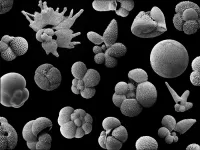(Press-News.org) Even with important strides in addressing health issues across the globe, men have not benefited equally compared to women. Men’s life expectancies have not grown as steadily as women’s over the past few decades, and they are expected to live about five years less than women, according to 2021 global health data from the Human Mortality Database and the United Nations’ World Population Prospects. The discrepancy in life expectancy between men and women persists in places all over the world, and is even growing in other places.
At a time when health resources are at a premium and need to be wisely allocated, health professionals must find points within men’s lives when it makes the most sense to intervene and advocate for preventive care for promoting better health outcomes. Life transitions such as marriage and fatherhood are often pivotal and crucial intervention points — and men often experience long-term health benefits from those family roles, with lower mortality risks than single men without children. But just like every man is different, health concerns across global communities differ as well.
Research from the University of Notre Dame finds that not all life transitions produce the same health results, and not all men’s global health policies should look the same from one country to another.
In most contexts in the United States and Europe, men tend to experience physical health changes when they get married and start having a family. These changes include an increase in waist circumference and body mass index — a phenomenon known as the “dad bod,” explained Lee Gettler, associate professor of anthropology and chair of Notre Dame’s Department of Anthropology.
But Gettler’s research found that this phenomenon actually differs across societies. His study, recently published in the journal Social Science and Medicine, used a large longitudinal dataset from the Philippines to explore how men’s physical health changed across transitions to either marriage or cohabitation and fatherhood. His and his co-authors’ findings present a different picture of Filipino men’s health as it relates to these major transitions, compared to what is commonly seen in the U.S. and Europe.
Gettler worked with scientists from the University of Michigan, Northwestern University and the University of San Carlos in Cebu City, Philippines, to conduct and compile the research.
“Our research shows that the links between physical health with marriage and fatherhood are different for Filipino men in Cebu than they are in places like the United States or Europe,” said Gettler, who is also director of Notre Dame’s Hormones, Health and Human Behavior Lab and faculty affiliate with the Eck Institute for Global Health.
Gettler and his fellow researchers collected socio-demographic, health, behavioral and testosterone data from a long-running birth cohort study of Filipino men at ages 21, 26 and 31 (approximately) between 2005 and 2014. The researchers discovered that their group of 607 men fared much better than men in other cultures at the same stages of life.
“We don’t find that the married or cohabitating Filipino men have the same kind of negative health trajectories in terms of their physical well-being compared to the Filipino men who stayed single in our study,” Gettler said. “They are not experiencing deteriorating health, or demonstrating the dad bod, as a consequence of becoming a partner or father.”
The study acknowledged the myriad reasons behind this difference in outcome and said that diet and physical activity, as well as the social dynamics surrounding partnering, could explain such results. In addition, the study revealed that the Cebu men who were stronger and more muscular in their early 20s were more likely to later become partnered in the first place — a pattern the co-authors described as the “marital selection” model.
“Our findings indicate that an emphasis on men’s body composition as they transition to partnering and parenting may be less critical in Cebu and similar contexts,” the researchers wrote, compared to prioritizing other potential men’s health issues at this same stage in life, such as mental health.
“The transition to fatherhood represents a promising developmental period to encourage men to attend to their own health,” continued the co-authors, with the added benefit being overall family health in the long run. But, they cautioned, it is crucial to direct those promotional efforts and resources to the most pressing needs within a specific socio-ecological setting and community.
“In global public health, men’s well-being is often a secondary concern, despite men faring poorly compared to women on multiple dimensions of health across the life course,” Gettler said. “But to help address this gap, we not only need improved strategies and policies, but we also require a more robust understanding of factors that shape mens’ health across diverse contexts.
“This means we cannot simply transport a ‘one size fits all’ policy on men’s health and family life from one context to other settings around the world.”
Contact: Tracy DeStazio, associate director of media relations, 574-631-9958 or tdestazi@nd.edu
END
There’s no ‘one size fits all’ when it comes to addressing men’s health issues globally
2024-04-23
ELSE PRESS RELEASES FROM THIS DATE:
Comparison of the “late catch-up” phenomenon between BuMA Supreme and XIENCE stents through serial optical coherence tomography at 1–2 month and 2 year follow-ups: A multicenter study
2024-04-23
https://www.scienceopen.com/hosted-document?doi=10.15212/CVIA.2024.0024
Announcing a new article publication for Cardiovascular Innovations and Applications journal. This study was aimed at comparing the “late catch-up” phenomenon between the BuMA Supreme bioresorbable polymer sirolimus-eluting stent and the XIENCE stent through serial optical coherence tomography (OCT) at within 2 months and 2 year follow-ups.
A total of 49 of 75 patients from the PIONEER-II study were enrolled in a 2 year OCT follow-up study; 44 patients with 50 lesions were included in the statistical ...
Marine plankton communities changed long before extinctions
2024-04-23
For hundreds of millions of years, the oceans have teemed with single-celled organisms called foraminifera, hard-shelled, microscopic creatures at the bottom of the food chain. The fossil record of these primordial specks offers clues into future changes in global biodiversity, related to our warming climate.
Using a high-resolution global dataset of planktonic foraminifera fossils that’s among the richest biological archives available to science, researchers have found that major environmental stress events leading to mass extinctions are reliably preceded by subtle changes in how a biological ...
Research reveals tools to make STEM degrees more affordable
2024-04-23
In a new study in Issues, Dominique J. Baker, an associate professor in the College of Education and Human Development and the Joseph R. Biden, Jr. School of Public Policy & Administration at the University of Delaware, explored the role of student loans on hopeful students striving for college degrees, particularly in STEM.
The cost of attending a public four-year college in the United States has more than doubled since the early 1990s, when inflation is factored in.
Undergraduate student loan debt has become unmanageable for a wide swath of borrowers ...
Q&A: UW research shows neural connection between learning a second language and learning to code
2024-04-23
As computer programming becomes an increasingly valued skill in the workforce, there is a greater need to understand how people learn to code most effectively.
Statistics show that up to 50% of students who enroll in introductory programming courses in the United States eventually drop out, suggesting a mismatch between how coding is learned and the way it’s taught. A new study from the University of Washington, published March 5 in Scientific Reports, examines that issue.
The researchers recorded electrophysiological brain responses of varyingly skilled programmers as they read ...
Keane wins 2024 Gopal K. Shenoy Excellence in Beamline Science Award
2024-04-23
Physicist Denis T. Keane is the 2024 recipient of the Gopal K. Shenoy Excellence in Beamline Science Award. He is a beamline scientist and director of the Dupont-Northwestern-Dow Collaborative Access Team (DND-CAT) at the U.S. Department of Energy’s (DOE) Advanced Photon Source (APS) at DOE’s Argonne National Laboratory. He is also a research professor in the Materials Science and Engineering Department at Northwestern University.
The annual award recognizes active beamline scientists at the APS, ...
Livestock abortion surveillance could protect livelihoods and detect emerging global pathogens
2024-04-23
A small-scale surveillance system in Tanzania for reporting livestock abortions could help protect livelihoods and provide insights on potential livestock-to-human infections.
The research, published April 16 as a Reviewed Preprint in eLife, is described by editors as an important study with convincing findings of potential interest to the fields of veterinary medicine, public health and epidemiology.
Loss of livestock through abortion is a major concern for the worldwide livestock industry, resulting in significant ...
Optimal timing maximises Paxlovid benefits for treating COVID-19
2024-04-23
Researchers have described the optimal timing for COVID-19 patients to take the antiviral, Paxlovid, to get the most benefit from the treatment, according to a study published April 16 in eLife.
The findings suggest that taking Paxlovid three to five days after COVID-19 symptoms emerge may maximise the drug’s ability to reduce viral loads, minimise viral spread and reduce viral rebound. They also indicate that broader use of Paxlovid during this window might be a powerful tool to help curb the spread of the SARS-CoV-2 ...
IU researchers receive $4.8 million grant to study the role of misfolded protein TDP-43 in neurodegenerative diseases
2024-04-23
INDIANAPOLIS—A new $4.8 million grant will support researchers from Indiana University School of Medicine and the Medical Research Council Laboratory of Molecular Biology to study how human neurodegenerative diseases are affected by the misfolding of the protein TDP-43. Misfolding occurs when a protein adopts a conformation which differs from the native one.
The researchers, funded by the National Institute of Neurological Disorders and Stroke, have developed an innovative approach to deciphering the role of TDP-43 misfolding in the pathology ...
DOE’s Office of Science Graduate Student Research Program selects 86 outstanding US graduate students
2024-04-23
WASHINGTON, D.C. – The Department of Energy’s (DOE’s) Office of Science has selected 86 graduate students representing 31 states and Puerto Rico for the Office of Science Graduate Student Research (SCGSR) program’s 2023 Solicitation 2 cycle. Through world-class training and access to state-of-the-art facilities and resources at DOE national laboratories, SCGSR prepares graduate students to enter jobs of critical importance to the DOE mission and secures our national position at the forefront of discovery and innovation.
“The Graduate Student Research program is a unique opportunity ...
This tiny chip can safeguard user data while enabling efficient computing on a smartphone
2024-04-23
Health-monitoring apps can help people manage chronic diseases or stay on track with fitness goals, using nothing more than a smartphone. However, these apps can be slow and energy-inefficient because the vast machine-learning models that power them must be shuttled between a smartphone and a central memory server.
Engineers often speed things up using hardware that reduces the need to move so much data back and forth. While these machine-learning accelerators can streamline computation, they are susceptible to attackers who can steal secret ...

